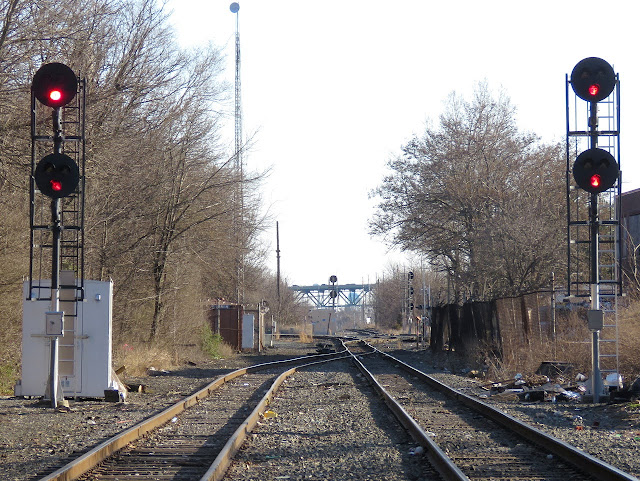Punching a rail lone through the Rockies is no easy feat. Today the preferred route is going around the mountains via the Union Pacific Main Line over Sherman Hill or the BNSF routes further north or south. If one absolutely has to go
through the Rockies, the Moffat Tunnel route exists for trains traveling west of Denver. However the Moffat tunnel was completed in 1927 so what did one do before that? Well the original route through the Rockies was via the Arkansas River valley and the Tennessee pass. I have previously covered both the
Moffat Tunnel and the
Tennessee Pass in a
previous post, but today I will take a closer look at the Tennessee Pass line on its eastern approach to the summit and what it's been up to since Union Pacific suspended service in 1997. Also included are photos off the San Luis and Rio Grande Railroad yard in Alamosa, CO before its collection of passenger were auctioned off in bankruptcy in 2021. The full set of photos can be located
here (
mirror ).
Like I said in the intro, the Tennessee Pass like has been out of service since 1997 after Union Pacific saw no need for a second route between Denver and Salt Lake City. Previously the line had belonged to the Denver Rio Grande and Western, a corporate entity that also owned Southern Pacific. Union Pacific had envied a takeover of SP due to SPs ownership of the Oakland Container terminal and had gone as far to use some underhanded tactics to block the ATSF merger of the 1980s TLDR, the Rio Grand route across Colorado was an afterthought for UP and the Tennessee Pass line was removed from service, but not abandoned because it could serve as an emergency backup in case the Moffat Tunnel suffered a catastrophic failure.
Today the Tennessee Pass line is a railroad preserved in amber. Not only is it protected against re-signaling protects or PTC, but the arid mountain climate literally protects the infrastructure from rot and corrosion. Everything was left in place from the rails to the signals to the interlocking appliances. Here we see the signals at the west end of the Nathrop siding and an example of why The West is such an amazing place.
The relay hut was unsecured and although scrappers had hit the coils and the wire, the relays themselves were piled, unbroken, in a corner.
The Arkansas River defined the Rio Grand's first assault on the Rockies. The biggest problem is that trains can only access this route from Pueblo, 120 miles south of Denver.
It seems these days I can't do any railfanning without spotting a bald eagle. The bald eagle population has quadrupled since 2009.
Being into infrastructure renders "out of service" meaningless. East end of the Nathrop siding.
Don't let the Vader hoods fool you. These signals are old school GRS Type D's, not Safetran CLS-20s seen here at the east end of the Brown Canyon siding.
In the age before radio readouts, detect detectors had to use wayside indicators like this blue strobe light at the Milepost 2218 intermediate signals,.
The line was also a superb reservoir of General Railway Signal Model 5D point machines. The 5D can be differentiated from the later 5H by the presence of a braking clutch box on the motor.
Salida, Colorado is one of the larger communities on the Tennessee Pass. The town celebrates
its heritage with a large white S on an adjacent mountain in addition to a former DRGW caboose. Salida was the base for most of the DRG&W's narrow Gauge operations that served small mining communities throughout the Colorado Rockies.
























